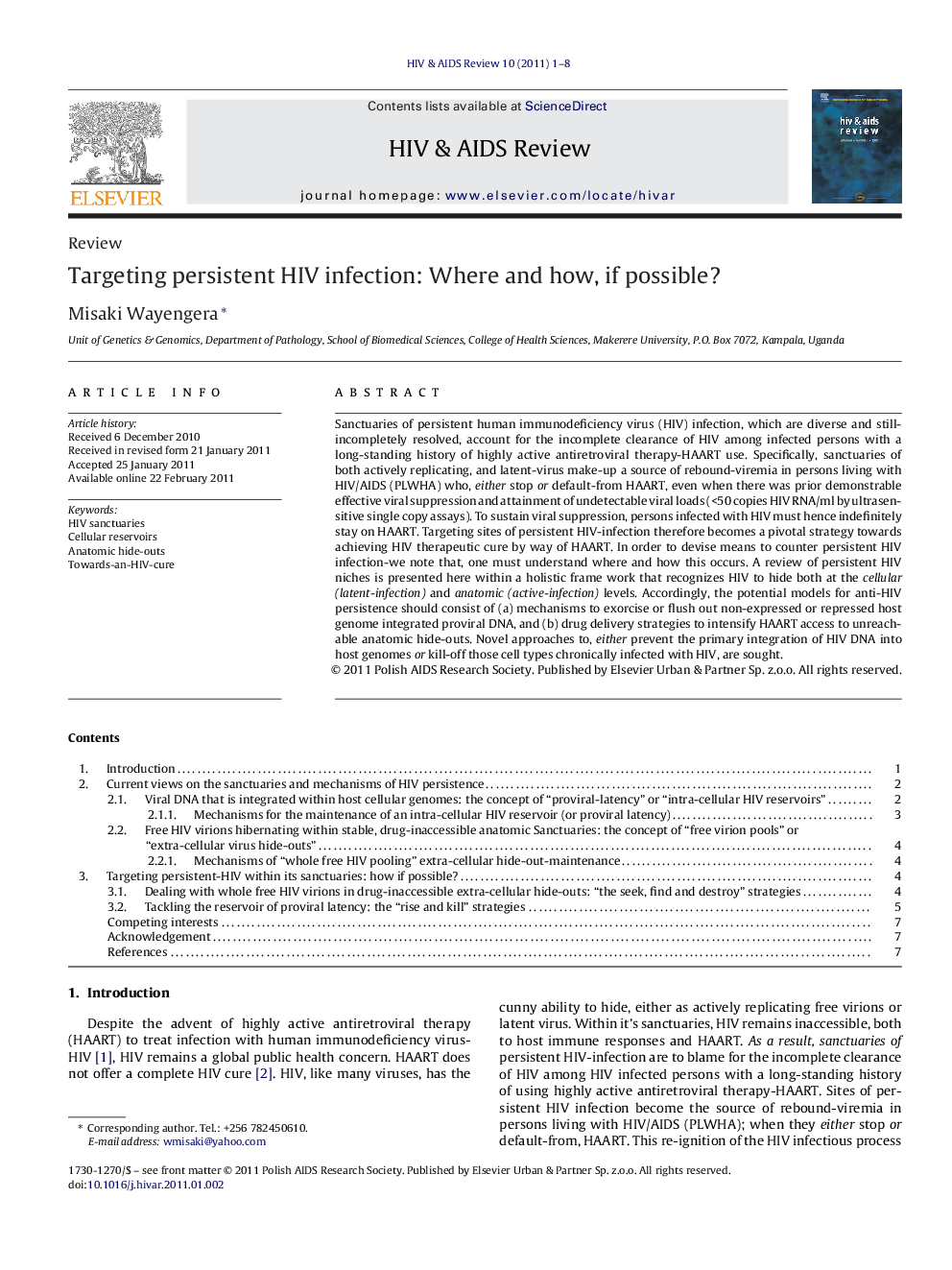| کد مقاله | کد نشریه | سال انتشار | مقاله انگلیسی | نسخه تمام متن |
|---|---|---|---|---|
| 3332458 | 1213089 | 2011 | 8 صفحه PDF | دانلود رایگان |

Sanctuaries of persistent human immunodeficiency virus (HIV) infection, which are diverse and still-incompletely resolved, account for the incomplete clearance of HIV among infected persons with a long-standing history of highly active antiretroviral therapy-HAART use. Specifically, sanctuaries of both actively replicating, and latent-virus make-up a source of rebound-viremia in persons living with HIV/AIDS (PLWHA) who, either stop or default-from HAART, even when there was prior demonstrable effective viral suppression and attainment of undetectable viral loads (<50 copies HIV RNA/ml by ultrasensitive single copy assays). To sustain viral suppression, persons infected with HIV must hence indefinitely stay on HAART. Targeting sites of persistent HIV-infection therefore becomes a pivotal strategy towards achieving HIV therapeutic cure by way of HAART. In order to devise means to counter persistent HIV infection-we note that, one must understand where and how this occurs. A review of persistent HIV niches is presented here within a holistic frame work that recognizes HIV to hide both at the cellular (latent-infection) and anatomic (active-infection) levels. Accordingly, the potential models for anti-HIV persistence should consist of (a) mechanisms to exorcise or flush out non-expressed or repressed host genome integrated proviral DNA, and (b) drug delivery strategies to intensify HAART access to unreachable anatomic hide-outs. Novel approaches to, either prevent the primary integration of HIV DNA into host genomes or kill-off those cell types chronically infected with HIV, are sought.
Journal: HIV & AIDS Review - Volume 10, Issue 1, March 2011, Pages 1–8